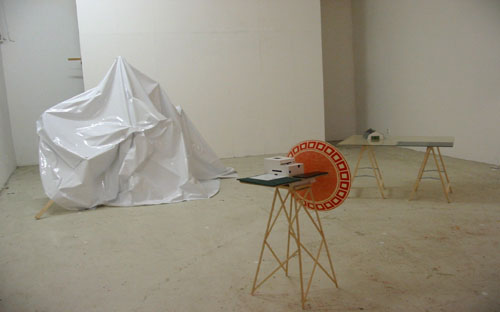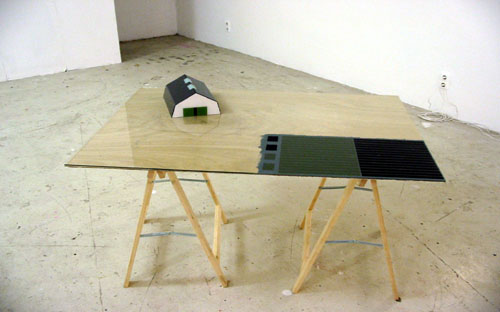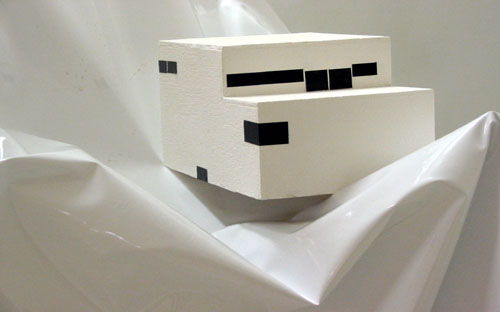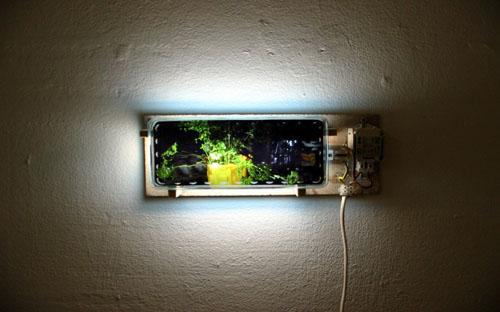Studio Galeria
Adam KokeschWelcome to the laboratory of Adam Kokesch, a young visual artist from Budapest! Working in a wide range of media, Kokesch considers artmaking as an experimental process in which traditional artistic techniques are constantly subverted and transformed but never excluded.







His paintings, whose accuracy and precision recalls the technical drawings of engineers were made by a special technique called "Hinterglass". The pictogram-like forms could be understood as simplified models of scientific thesises for those who are far from being familiar with the visual rhetoric of both natural and abstract sciences. Notwithstanding the scientific look of this imagery, these images are rather blueprints of subjective ideas, selected from and constituted on the basis of a data base or, as the artist calls it, a "data gate". "As an object", writes Kokesch, "the data gate cannot be identified through its spatial extension - it's more an illustration or, putting it to create the illusion of exactitude, a model.
The data-gate stretches on the surface of the wall as traditional easel painting does, but it's in fact about a window or a monitor." Adam Kokesch's work is marked by a both peripheral and ephemeral curiosity. As the image of a monoscope represents an in-between stage in the field of moving images - since it's not used for communication but for tuning television equipments - Kokesch's glass paintings are also situated somewhere in-between the surface of an easel painting and the transparent plane of a monitor.
Using traditional techniques of representation together with strategies and languages of computer technology which allows him to connect different systems of signs, Kokesch models a fictional and highly utopistic world. The poetry of variability. As his installations demonstrate, Kokesch's work also discloses a playful and ironic approach toward objects.
On the floor of the exhibition space, he built a model of society out of small, home-made objects placing the sign of food in the focus of this imaginary social universe. The pictograms on the floor, which could be also used as refrigerator magnets, reveal themselves as elements of a secret sign language of a family. Kokesch's blueprints of subjective ideas are made out of leftover materials, garbage, everyday objects and junk. These base materials were transformed and prepared with meticulous care, then left with just enough sign to preserve the possibility of their rough identification or to trigger associations.
The result of Kokesch's interventions is a selection of objects placed in a setting which could remind us a sterile laboratory. As one of his critics put it, Kokesch's work plays on "banality disguised as a laboratory situation". The poetry of banality.